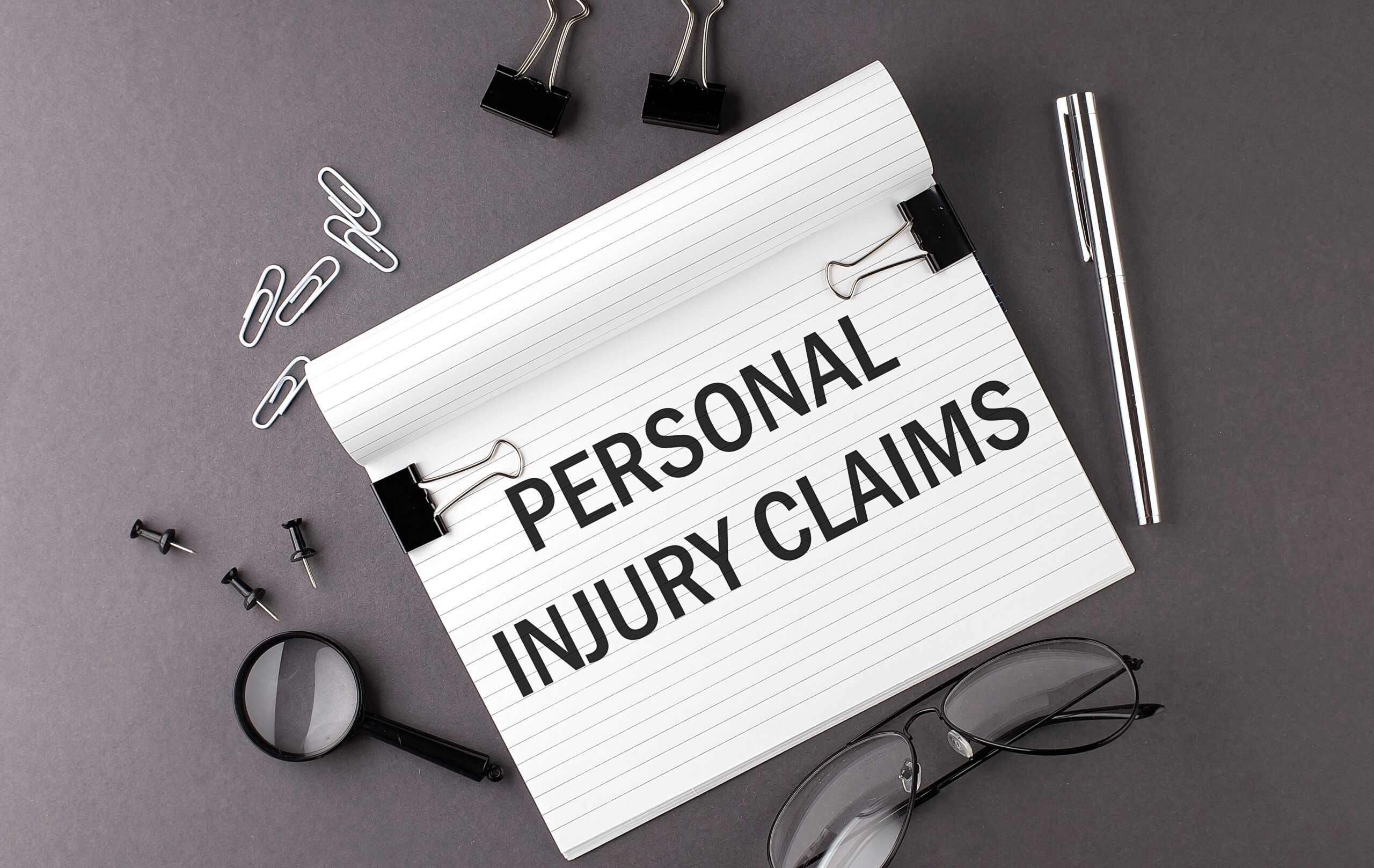Accidents Often Result in Broken Bones
Accidents can result in many different types of injuries. Some of the most common injuries related to accidents are broken bones. Although broken arms and legs are relatively common, especially among daredevil youth, they can be very serious injuries when they're caused by traumatic events like a slip and fall or a motor vehicle accident.
Dealing with broken bone injuries can be painful, stressful, and emotionally exhausting. Broken bones can result in thousands of dollars in losses, including emergency room and doctor visits, x-ray costs, and other related procedures. Additionally, further complications may arise that can create serious financial hardship for some accident victims when they face the final bill.
Taking the right steps after you are injured is important to ensure your timely recovery. Seek medical attention immediately and then talk to an experienced accident injury lawyer to understand the compensation you may be entitled to recover from the responsible person or insurance company.
What Causes a Broken Bone?
A broken bone or bone fracture occurs when force is exerted against a bone that is stronger than the bone can bear. This causes the structure and strength of the bone to tear or break. Broken bones can lead to severe pain and loss of function. In some instances, bone breaks can cause complications like nerve damage and infection.
Some people think of bones as static or dead tissue. But this isn't true. Bones are a type of connective tissue that is made up of cells and reinforced with calcium. Our bones have a relatively soft center, called marrow, which is responsible for producing the blood cells humans need to stay alive. But the main functions of our skeleton are to support our body, allow us to move, and protect our internal organs. This tissue-like structure and soft center are what allow a bone to break. The important role of our skeleton is what makes that break so critical.
Many accidents can result in broken bones, such as:
- Car accidents
- Truck accidents
- Motorcycle accidents
- Pedestrian accidents
- Bicycle accidents
- Falls
If you sustain a fracture in any accident and believe someone else was to blame, you should allow a personal injury lawyer to assess your legal rights and options.
Symptoms of a Broken Bone
If you are involved in an accident or traumatic incident, you should get medical help right away after the personal injury incident. You do not want to risk waiting when you have an injury or making an existing injury worse. In most cases, you will definitely know if you have a broken bone because of clear symptoms. However, shock and other injuries can mask certain fractures. That is why going to a hospital is so important after an accident to ensure that you don’t aggravate an injury.
Symptoms of a broken bone can include:
- Severe pain
- Deformities, such as a fractured arm or broken limb appearing to be out of place
- Swelling, bruising, tenderness, numbness, or a tingling sensation around the injury
- Difficulty or pain when moving a limb.
- Hearing or feeling a snap or a grinding noise as the injury happens
- Feeling faint, dizzy, or sick as a result of the shock
Broken bones can range from stress fractures, which are tiny cracks in the bone, to more serious fractures where the bone is actually cracked and moves apart during an accident or fall.
The worst bone break is a compound fracture. Here, the bone breaks into two or more pieces, and one or more of the pieces punctures the skin, exposing the bone and creating a wound. This complex fracture poses a risk of infection. Also, it presents serious issues for an orthopedic surgeon while reconstructing and setting the break. The goal is for the bone to heal properly and as close as possible to its original position. Compound fractures require x-rays, emergency surgery, and additional doctor visits to improve the prognosis and prevent complications.
Any fracture requires immediate medical care. X-rays will determine whether you have broken a bone and whether you need a cast or a splint to treat the fracture. It is also possible that surgery will be necessary, depending upon the location and severity of the break. Pins, screws, or other measures might be necessary to stabilize the fracture. As a result, compound and other complex fractures are the most difficult and expensive to treat.
Broken Bones Are Common in Accidents
Fractures are among the most common orthopedic injuries, with roughly 7 million people suffering bone fractures in the United States every year. The average adult in the United States suffers two bone fractures in their lifetime.
Extremity fractures such as broken arms are the most common, usually suffered by men under 45 years old, or women over 45 years old. For women, this is due to osteoporosis, a reduction in bone density commonly found in older women.
Types of Fractures
There are different types of bone fractures. Some are more severe than others, depending on the strength and direction of the force, the particular bone involved, and the age and health of the victim.
When we speak of a broken bone after an accident, the first thing that comes to mind is probably something like a person with their arm in a cast. But other bones in the human body can break too. In fact, if it’s a bone, it can probably break or fracture during a serious accident, like a car accident.
For example, a person may break a rib during an accident; or they may have their foot crushed, causing multiple bones in their foot to break or fracture at once. Someone may also break a bone in their back or neck, which causes its own unique issues and treatments, but nonetheless, is a broken bone.
The point is, insurance companies don’t always take broken bones seriously, since a broken arm or leg can be quite common in daily life. But in reality, these types of injuries are often serious.
Some common types of fractures include:
- Avulsion fracture: a piece of the bone that is attached to a tendon or ligament gets pulled away from the main part of the bone.
- Comminuted fracture: the bone becomes shattered and breaks into many smaller pieces. Some slip and fall victims try to catch themself as they fall, leading to a broken wrist and comminuted fractures.
- Compression fracture (wedge fracture): the bone is broken from a downward force, and usually occurs in the spine.
- Fracture-dislocation: an injury where both a fracture and dislocation happen simultaneously. This will often cause a bone fragment to remain lodged between the dislocated segments and require surgery for removal. Car accident victims often suffer from these types of injuries.
- Hairline fracture (stress fracture): small breaks along the bone or bruises inside the bone.
- Impacted fracture (buckle fracture): occurs when the broken ends of the bone are pressed against one another due to the force of the injury.
- Intraarticular fracture: a fracture that pushes into a joint. This can damage the cartilage between the joints and has a higher risk of developing long-term complications.
- Pathological fracture: break in a bone that is weakened from underlying illness.
- Spiral fracture: occurs when torque or twisting is applied to a bone
Complications from Breaks, Fractures, and Crushed Bones

Broken bones are not always straightforward. Sometimes, they can be accompanied by or lead to other problems. Serious complications are rare, but they are more common in injuries that are caused by severe force like those caused by car accidents.
This can significantly increase the amount of damage, pain and suffering, and cost of treatment. This is one of the major reasons why some broken bones end up costing thousands of dollars to treat.
Below are some common complications seen in broken bone cases.
#1. Excessive Bleeding and Disrupted Blood Flow
Many fractures cause noticeable bleeding around the injury. In most cases, it’s not serious. However, in some cases like those involving large bones or crushed bones, internal bleeding or bleeding from an open wound can cause a life-threatening drop in blood pressure.
Sometimes a dislocation or break can cause a disruption of blood flow. This can cause some tissue to not get enough blood, which can be a major problem for the body. In worst-case scenarios, it may not be noticed and leads to amputation.
#2. Nerve Damage
Sometimes when a bone is fractured, nerves are stretched, bruised, or crushed. These injuries usually heal on their own, but they can also cause severe pain while they do. In rare cases, nerves are torn, sometimes by sharp bone fragments. Torn nerves do not heal on their own and may have to be repaired surgically.
#3. Pulmonary Embolism
A pulmonary embolism is the most common severe complication caused by a fracture, usually to the hip or pelvis. It occurs when a blood clot forms in a vein, breaks off, travels to a lung, and blocks an artery. As a result, the body may not get enough oxygen.
Pulmonary embolism is most common in older people who break their hip. But they can occur to anyone who suffers a serious fracture.
#4. Infections
If the skin is torn when a bone is broken, the wound has a chance of becoming infected. In some cases, this infection may spread to the bone or blood, which can be very serious and will require extended hospital care.
#5. Joint problems
Fractures that extend into a joint can damage the cartilage at the ends of bones. Damaged cartilage can scar, which makes joints stiff and limits their range of motion. Physical therapy is usually needed to treat joint problems from broken bones. Surgery is required to repair damaged joints in some cases.
#6. Osteonecrosis
When blood flow to a bone is disrupted by a fracture or dislocation, part of the bone may die from a lack of blood. This is known as osteonecrosis. Most of the time, doctors can prevent this before it becomes a problem. However, in cases where blood flow is hindered for too long, patients may lose function or require amputation.
How Much Does a Broken Bone Cost?
Most people think of a broken bone injury as a broken arm in an arm splint simply requiring non-surgical treatment. But they really have no idea about the cost of a broken arm or the doctors' fees that might be involved. The term "broken bones" can also refer to multiple breaks in one bone or damage to multiple different bones. Also, crush injuries, fractures to spinal bones, and fractures to facial bones can qualify as commonly broken bones.
Serious fractures like these can end up costing accident victims thousands of dollars in medical expenses. Further, they can also cause significant time away from work, resulting in lost wages or the inability to return to former employment.
The severity of a broken bone from an accident can vary, but they all run the risk of costing thousands of dollars in medical bills and lost wages. Even if you have health insurance, a relatively simple procedure involving a broken bone can get pretty pricey.
Adding up charges for an emergency room visit, doctor's fees, lab fees, x-rays, fees for follow-up care, braces, slings, bandages, splints, casts, clinic visits, CT scans, and other procedures can quickly push the costs over $10,000.
Physical therapy, if necessary, can also add significant costs. Treatments for any nerve damage or other complications, such as muscle damage, also will escalate the cost. Depending upon your insurance policy, there is no guarantee that all or even most of these costs will be covered.
With medical costs constantly on the rise, any injury in an accident may wind up costing far more than you expect. Broken bones are no exception. Even with health insurance, a broken bone can be very expensive.
The Cost of a Broken Leg
Without health insurance, the costs of a broken leg can reach many thousands of dollars
- If you don’t have health insurance, treatment for a broken leg generally can be as much as $2,500 or more just for a break that calls for a cast. That can include an average of more than $200 for an x-ray – although that can cost as much as $1,000 – about $225 for a cast, and as much as $1,000 for the doctor’s fee, in addition to up to $200 for an office visit fee. Fees can vary depending on where you are and what prevailing healthcare costs are in your region.
- If you suffer a broken leg that requires surgical treatment and you do not have health insurance, surgical treatment of a broken leg typically costs $17,000 to $35,000 or more.
- Health insurance will typically cover a broken leg, but you remain responsible for copayments and coinsurance. These can amount to thousands of dollars. This is especially true if your deductibles or yearly out-of-pocket maximums are high. This would be common with many plans on the Healthcare Exchange.
The Cost of a Broken Arm
A broken arm from an accident is common but no less expensive. Here’s a summary of broken arm costs in the United States:
- If you have no health insurance, the cost of diagnosis and treatment for a broken arm that does not require surgery generally runs up to $2,500 or more.
- If surgery is required, without health insurance a broken arm generally costs about $16,000 or more.
- Health insurance would normally cover a broken arm. However, for someone on a health insurance policy through the Healthcare Exchange, deductibles could be more than $5,000. This means you will wind up being responsible for the full costs yourself.
In addition, the severity of the break is a major factor in how much it costs to treat a fracture. Compound fractures, for example, can be considerably more expensive to treat.
How Can I Hold Someone Liable for My Broken Bone Injuries?
Holding someone liable for your broken bone injuries typically involves establishing that the other party was negligent or at fault for the accident that caused your injuries. Here are the steps you can take to pursue liability:
1. Seek Medical Attention: Immediately after the accident, prioritize your health by seeking medical attention. Documenting your injuries is crucial for establishing a connection between the accident and your broken bones.
2. Preserve Evidence: Collect and preserve evidence related to the accident. This may include:
- Accident Scene Information: Document the scene of the accident, including any hazards or conditions that may have contributed to the incident.
- Witness Statements: Obtain contact information from any witnesses who can provide an account of the events leading to the accident.
- Photographs: Take pictures of the accident scene, your injuries, and any property damage. Visual evidence can be powerful in establishing liability.
3. Report the Incident: File an incident report with the relevant authorities. This is especially important in cases of car accidents or accidents on someone else's property.
4. Identify the Responsible Party: Determine who may be at fault for the accident. This could be another driver, a property owner, an employer, or any other party whose negligence contributed to the incident.
5. Consult an Attorney: Reach out to a personal injury attorney experienced in handling cases involving broken bone injuries. They can provide guidance on the legal aspects of your case, assess the strength of your claim, and advise you on the potential damages you may be entitled to.
6. Establish Negligence: To hold someone liable, you typically need to prove negligence. This involves demonstrating that:
- Duty of Care: The responsible party owed you a duty of care. For example, drivers have a duty to operate their vehicles safely, and property owners have a duty to maintain a safe environment.
- Breach of Duty: The responsible party breached their duty of care through negligent actions or failure to act reasonably. This could be, for instance, a driver texting while driving or a property owner neglecting to address a known hazard.
- Causation: The breach of duty directly caused the accident and, subsequently, your broken bone injuries.
- Damages: You suffered actual damages, such as medical expenses, lost wages, pain and suffering, and other losses, due to the accident.
7. Document Damages: Keep detailed records of all related expenses and losses, including medical bills, receipts, and documentation of missed work. This information will be crucial when seeking compensation.
8. Negotiate with Insurance Companies: Your attorney can assist in negotiating with the responsible party's insurance company. They will work to secure a fair settlement that covers your damages.
9. Consider Legal Action: If a fair settlement cannot be reached through negotiations, your attorney may advise filing a personal injury lawsuit. This legal action aims to hold the responsible party accountable in court.
10. Attend Legal Proceedings: If your case goes to court, attend legal proceedings as needed. Your attorney will guide you through the process and represent your interests.
Consulting with a personal injury attorney early in the process is crucial. They can provide specific advice tailored to your situation, assess the viability of your claim, and guide you through the legal complexities associated with pursuing compensation for broken bone injuries.
How an Experienced Chicago Injury Lawyer Can Help with Your Broken Bone Claim
If you suffer a broken bone in an accident involving another party, whether in a traffic accident or an accident on someone else’s property, the other party may be legally liable for your damages. Regardless of what your insurance does or does not cover, you might be able to recover damages from the other driver or property owner, or from that person’s insurance carrier.
It is important to explore your legal options to obtain compensation for your injuries. There is no reason for you to bear all the expenses yourself if another party was responsible. In addition, the law imposes deadlines on the amount of time you have to bring a legal claim for compensation after an accident. Don’t delay, contact an attorney as soon as possible to ensure you don’t jeopardize your important legal rights.
We can help in the following ways, among others:
- Gathering evidence that someone else was liable for your accident
- Collecting your bills and calculating your past and future losses, including non-economic losses
- Filing the necessary insurance claims with supporting evidence
- Handling all communications with insurance adjusters
- Negotiating the highest possible settlement for your broken bone
- Filing a personal injury lawsuit when necessary to seek full compensation
- Handling all litigation matters, including ongoing settlement negotiations or even a trial
There is no need to add the stress of financial losses or injury claims to an already stressful situation. Instead, allow our personal injury attorneys to take over this process for you.
Contact a Personal Injury Lawyer at Abels & Annes, P.C.
If you have been injured in an accident, you should consult an experienced personal injury attorney to protect your rights. The attorneys of Abels & Annes are here to help you following an accident. You can reach us at (312) 924-7575 or through our website.



